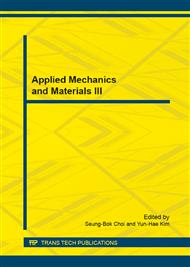p.910
p.914
p.919
p.927
p.943
p.948
p.952
p.958
p.964
Complex Wettability and Self-Cleaning Performance of Butterfly Wing Surface
Abstract:
The microstructure, hydrophobicity and chemical composition of butterfly wing surfaces were investigated by a scanning electron microscope (SEM), a video-based contact angle meter, and a Fourier transform infrared spectrometer (FT-IR). Using CaCO3 particle as simulated pollutant, the self-cleaning performance of the wing surface was measured. The wing surfaces possess complicated micro/nanostructures. According to the large contact angles (140.2~156.9°) and small sliding angles (1~3°) of water droplet, the butterfly wing surface is of high hydrophobicity and low adhesion. The average rate of CaCO3 pollution removal from the wing surface is as high as 86.2%. There is a good positive correlation (r=0.89) between pollution removal rate and roughness index of the wing surface. The coupling effects of hydrophobic material and rough microstructure contribute to the special complex wettability and remarkable self-cleaning property of the wing surface. Butterfly wing can be used as a template for design of superhydrophobic surface and self-cleaning material. This work may offer inspirations for biomimetic fabrication of novel interfacial material with multi-functions.
Info:
Periodical:
Pages:
943-947
Citation:
Online since:
January 2015
Keywords:
Price:
Сopyright:
© 2015 Trans Tech Publications Ltd. All Rights Reserved
Share:
Citation:


